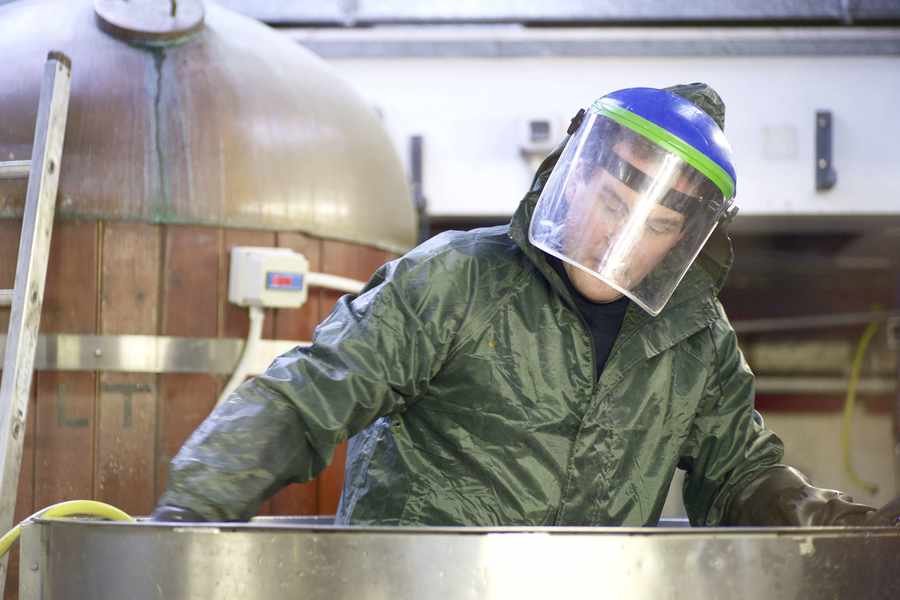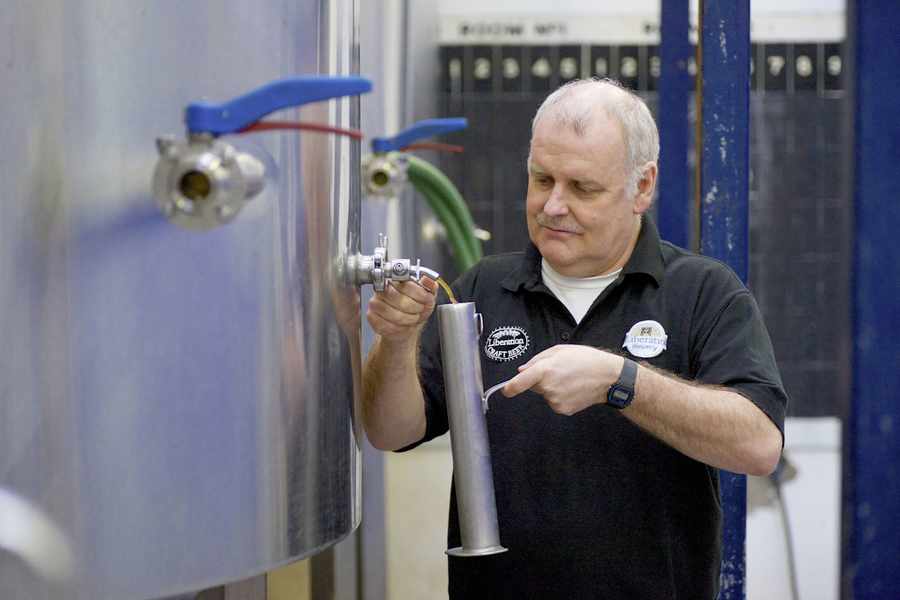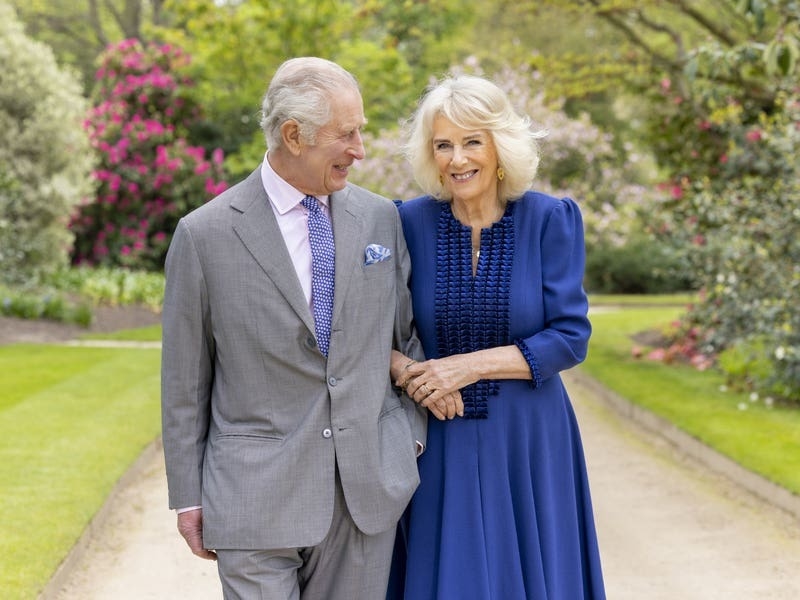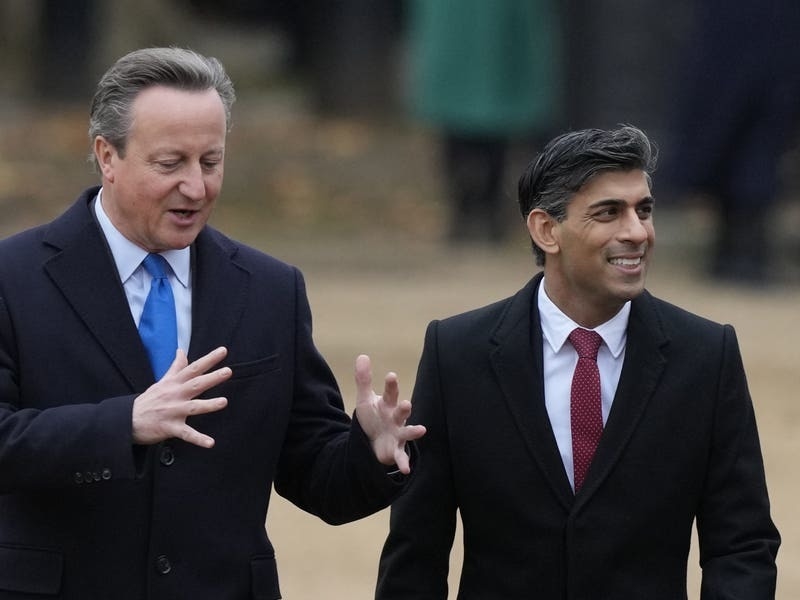These days Mary Ann is still brewed, by the Liberation Group at Longueville – and is as much a winner as ever. Last week Mary Ann Best was awarded three medals (a silver and two bronze) at the International Brewing Awards in Burton upon Trent, together with a gold medal for Liberation IPA ale and silver for cask ale Liberation Noire.
- Education: Hautlieu School, Hull University
- Family: His girls, wife Fiona and daughter Emily
- Charity support: Holidays for Heroes Jersey
- Favourite tipple: With cheese, Mary Ann Best; with seafood, Liberation Ale; with spicy food, Liberation IPA
It was another proud moment for head brewer Paul Hurley, who has been nursing hops for over 30 years and has also been on the judging panel himself on a number of occasions. ‘They’ve given me the nickname The Dark Lord,’ he says with a grin, recalling when, after four days of judging dark beer, he managed to identify a pint in the pub just from a hint of cloves.
In fact brewers seem to express their appreciation of beers and ales in much the same way as any connoisseur of wine – and judges may be ‘getting’ anything from farmyard and wet hay to chocolate, coffee or peaches.
‘In competition you get 15 beers and you have to get those down to a shortlist of three. I usually sniff first, take a sip (I swallow, but not everyone does) and then if I think it’s a good one I push that forward. Usually there’s a consensus and 90 per cent of the time the gold winner will stand out. The big arguments are usually over third place – the bronze – and fourth place.’
It is no mean feat for a small team from Jersey to win against competitors from across the globe, including the big European producers such as Germany and Belgium, the USA, New Zealand and as far afield as Japan.
‘We have a great team and it’s wonderful for them, after so many years,’ he said. ‘We’ve been through some hard times, but for the past five or six years we’ve been on an upward swoop.’

It’s clear, as we stand on a platform overlooking vats of fermenting stews, that for Mr Hurley this is just as much a labour of love now as it was when he first started at the age of 21.
On a brewing day – three times a week in the summer months – he is at work by 4.45 am and remains as excited as ever by the endless variations that can be achieved, depending on where hops are grown and what they are mixed with.
In fact, he’s never looked back since attending an interview at the then Ann Street Brewery, more out of curiosity than a desire to join the industry.
‘I’d just graduated from Hull University in biochemistry and I’d already got a place to study sports science at Leicester,’ he said. ‘The job was in the lab at Ann Street and I was interviewed by the then head brewer, Humphrey Rudgard. I was sent on a tour that was supposed to last 20 minutes and I found it so interesting that I didn’t get back until one and a half hours later.’
Certain that he had lost the opportunity – not least because of a surprise question about Jersey politics – he was amazed to get a call half an hour later offering him the job. Nonetheless, the decision was complicated by ‘a girl I knew in Hull, called Fiona. I knew she was the one, and she became my wife’.
Apart from the attractions of Hull, he could not resist the opportunity at Ann Street.
‘It was hands on from the beginning,’ he said. ‘I spent some time at Allied Breweries in Burton-on-Trent and learned all the techniques, went on to take a couple of courses and qualified as a brewer in 1988.
‘The head brewer at the time wanted me to produce a particular beer, which I thought would be dead easy – I was cocky in those days. It took ten attempts and became Mary Ann Pilsner Gold, which went on to sell millions of pints. I learned so much from those ten brews – and the fear – about what could happen and what needed to be done.’
The position of head brewer became vacant in 1994, when Mr Rudgard retired, and six months later Mr Hurley was asked by chief executive Ian Steven to take on the role. Little did he think that ten years later he would be looking at a downward slope.
‘That was when we moved here, to Longueville. The decision to stop brewing lagers had been made in the 80s and gradually we went from 40 staff, to 24, to 12 and then six. It did not look like a great career move. I managed to keep the cream of the employees, but it was traumatic and a very hard time. My lads – that’s what I call them, my brewery lads – are like family.
‘Each year the number of barrels went down and down. It was soul destroying because we had such a talented team.’
The future looked grim – but all was not lost. The late Tom Scott, who took over the company and aligned it as part of the CI Traders Group in 2002, invested in a new brewery at Longueville.
‘The downside was that there was no investment in promotion of the products,’ said Mr Hurley.
In the meantime the company had also acquired the Tipsy Toad brewhouse, and although the volume was very small, that operation continued.
The turning point came in 2008, when, following a management buyout, the brewery came under the ownership of the Liberation Group, headed by chief executive Mark Crowther, who happens to have ‘a passion for beer’.

Mr Hurley recalled: ‘He got us together and said that everyone would have to get behind it. We went from zero to 700 barrels in our first year.
‘Then we said we’d like to go to the Great British Beer Festival and take a stand. We had just four beers – Liberation Ale, Mary Ann Best, Mary Ann Special and a Christmas ale – it was sweltering, it was in August and we were wearing Santa hats. But it caught people’s imagination.
‘One of the buyers from Wetherspoons was there and he said he would take one of our beers for the following year. The first order was for 492 casks – for us it was about three complete brews, which was quite a lot.
‘The next year, we went to the festival again, and this time we took a range of seasonal beers – Summer Blonde, which includes local honey; Autumn Rouge, a connoiseur’s ale packed with hops from the US and New Zealand; the Noire, laced with chocolate buttons from La Mare Wine Estate; and for spring, Amber, containing Amarillo hops.
‘When I started, we used seven sources of hops – six from the UK and one from Europe. Now we use 43, including hops from New Zealand and America. It’s a bit like a chef using herbs and spices. One hop might have a blackcurrant note, another could be orange and coconut. It depends on where they are grown, the bitterness, and where they are added in the process.’
He has been known to visit pubs selling Liberation brew and send photos back to colleagues.
‘When I went over for the Olympics, I went into a pub in Wimbledon and Liberation Ale was on one of the hand pumps. It was just a fantastic feeling,’ he said.
Mr Hurley’s early love of sport remains – he enjoys a game of tennis when time permits and three years ago took up cycling.
Surprised by how much he enjoyed it, he now cycles to work in the summer months. And daughter Emily has taken up the sport science challenge that he turned down in his youth and is now studying at Cardiff University.
He is looking forward to the next phase of investment in Liberation beers – four new fermenters that will replace the ageing equipment acquired from Tipsy Toad.
‘Five years ago, we were doing zero exports. Now, each year there is growth. It takes us three days to fill the 840 casks that go to Wetherspoons in the UK.
‘It’s a good time to be a brewer.’







